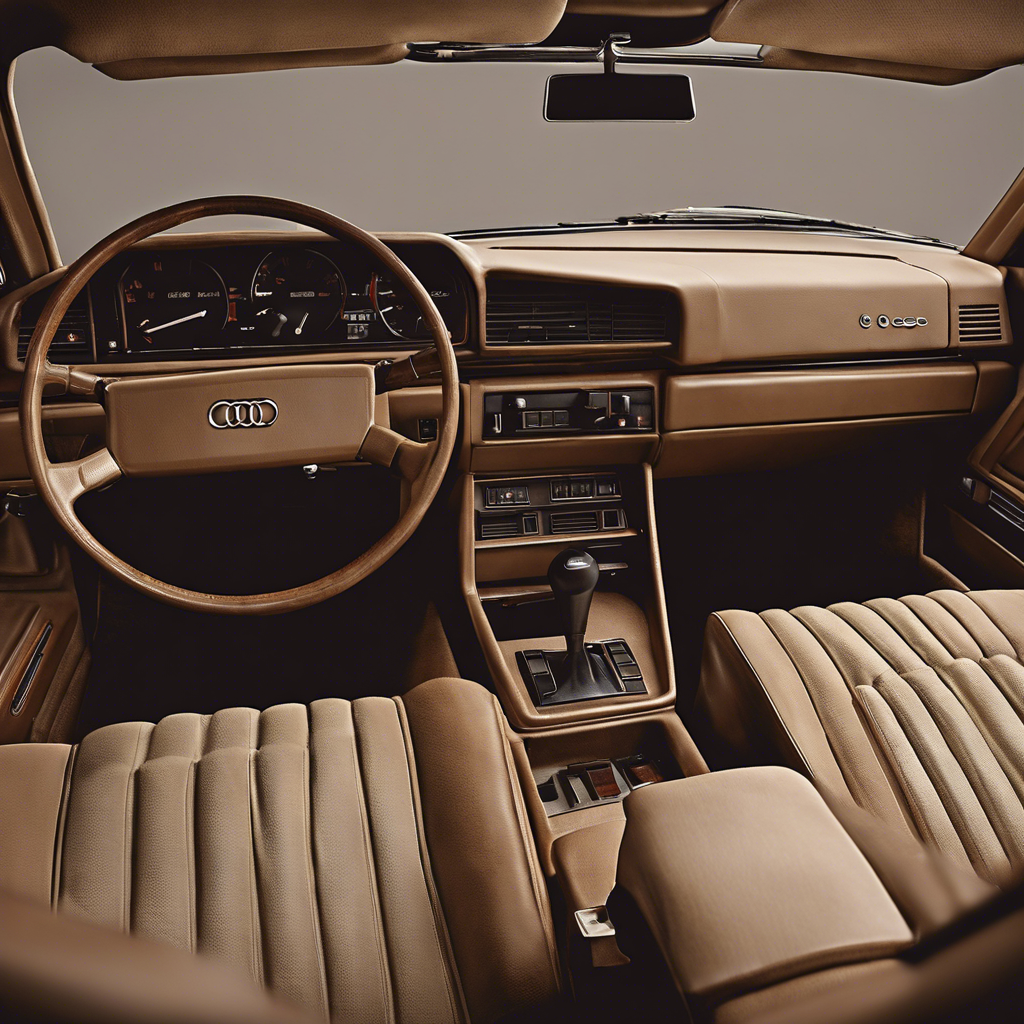The Audi 4000: A Forgotten Legend of Automotive Engineering
September 28, 2024

The automotive industry has seen a multitude of transformations over the decades, each era birthing new innovations, designs, and models that captured the hearts and minds of enthusiasts. Among these is the Audi 4000—a vehicle that, while perhaps not as iconic as some contemporaries, remains a fascinating chapter in the story of Audi and the broader world of automotive engineering. In this blog post, we will delve into the history, design, performance, and legacy of the Audi 4000, shedding light on why it deserves a place in the annals of automotive history.
A Brief History
The Audi 4000 was produced in the early 1980s, appearing directly in a competitive landscape dominated by manufacturers like BMW and Mercedes-Benz. Launched as part of Audi’s 80/4000 series, the 4000 was essentially the North American variant of the Audi 80, a front-wheel-drive compact executive car that established itself in the European market.
Audi’s automotive lineage can be traced back to the early 20th century, but it was during the 1980s that the brand began gaining traction and recognition in the United States. The 4000 was introduced as a response to consumer demand for a premium compact car that combined comfort, performance, and advanced engineering. This model was produced from 1980 until 1987, with various updates and iterations that reflected both market trends and consumer preferences.
Design and Engineering

The Audi 4000 is often noted for its understated yet elegant design. Unlike some of its flashier rivals, the 4000 embraced a more conservative aesthetic that appealed to buyers seeking sophistication without overt flamboyance. The car’s profile featured clean lines, a boxy silhouette, and an aerodynamic front end, bolstered by signature Audi styling cues.
Underpinning its design was a thoughtful approach to engineering. The Audi 4000 utilized a longitudinally mounted engine layout, a hallmark of Audi’s engineering philosophy that would ultimately lead to the Quattro system. The basis of the car was the B2 platform, allowing for a balance of ride comfort and dynamic handling—important attributes that helped differentiate it from other compact executive cars.
The initial offerings included a four-cylinder engine, with later models featuring a five-cylinder engine—an innovative choice for its time. Performance was respectable, offering a good blend of power and efficiency. The 4000 was able to accelerate smoothly while providing ample torque at lower RPMs, making it a pleasurable vehicle for both daily commutes and longer journeys.
Performance
Driving the Audi 4000 is a rewarding experience that reflects the brand’s commitment to performance. The car’s suspension system was designed to enhance steering precision and stability, contributing to a confident driving experience. Notably, the front-wheel-drive layout provided improved traction in adverse weather conditions, a beneficial feature for drivers in diverse climates.
The 4000 models varied in performance specifications based on engine choices and market offerings. In the U.S., the car was equipped with a 1.8-liter four-cylinder engine that generated about 100 horsepower. Later models transitioned to a 2.2-liter five-cylinder engine that produced around 130 horsepower, providing a noticeable boost in performance.
While not a sports car, the Audi 4000 was engineered to be responsive and agile, with a well-tuned suspension and chassis setup that absorbed bumps and uneven surfaces effectively. It provided a confidence-inspiring balance that encouraged spirited driving while maintaining the comfort and refinement expected from a luxury vehicle.
Interior and Comfort
Inside, the Audi 4000 presented a well-crafted and refined cabin that exemplified German engineering. The use of high-quality materials and thoughtful ergonomics provided an enjoyable user experience. Drivers and passengers alike appreciated spacious seating, adequate legroom, and a generally quiet environment—features that made long drives comfortable and enjoyable.
Audi’s attention to detail was evident in the array of features and technology present in the 4000. Depending on the trim level and options chosen, buyers could enjoy amenities such as power windows, central locking systems, and air conditioning—items that underscored Audi’s dedication to customer satisfaction.
The Legacy of the Audi 4000
While the Audi 4000 may not have enjoyed the same fame as other models in Audi’s automotive lineup, it played a significant role in solidifying Audi’s presence in the North American market. The car represented a pivotal point for the brand, showcasing its ability to marry performance with luxury and practicality.
The model’s influence can be traced through its progeny, with many design and engineering elements that would later manifest in popular models such as the Audi A4. Furthermore, the Audi 4000 laid the foundation for the implementation of advanced all-wheel-drive technology—ultimately leading to the success of the Quattro system, which would redefine performance vehicles.
Even today, the Audi 4000 holds a niche appeal among classic car enthusiasts who appreciate its distinctive blend of style and engineering ingenuity. Enthusiasts discuss restoration and preservation, ensuring that this model does not fade into obscurity.
Conclusion
In summary, the Audi 4000 may not be the most recognized name in automotive history, but it resonates with those who understand the nuances of engineering and the subtleties of design. As a product of its time, it showcased Audi’s ambition and laid the groundwork for future innovations that would propel the brand into the upper echelons of the automotive world. The 4000 remains an unsung hero—an emblem of a bygone era that continues to intrigue and inspire automotive enthusiasts. For those who value history, craftsmanship, and the evolution of the automobile, the Audi 4000 deserves recognition and reverence, ensuring that its legacy lives on for generations to come.